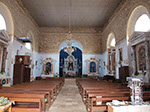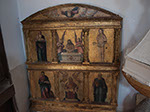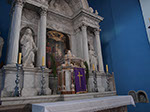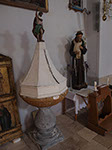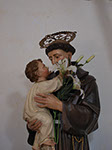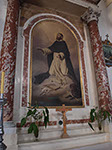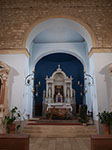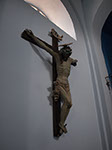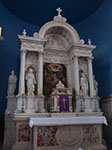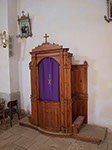 |
 |
Cultural info
Silba churches
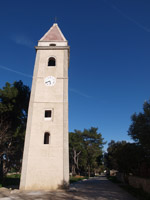
One of the most amazing things about Silba's culture and history is the fact that it has, beleive it or not, even 6 churches. You will be even more surprised when you find out that there were even more of them some 3 centuries ago, but due to bad economic situation and numerous wars in history, "only" six of them are still in one piece. Today, only the bigest church is renovated from time to time, and other five of them are slowly, but surely, dilapidating and going out of repair. Why? The main reason is probably the lack of money and funds but also the lack of people who are capable and willing to do something about it...
So, here they are:
The Church of St. John
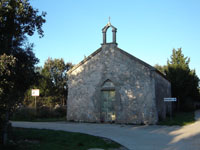
HISTORY: This is the oldest church on Silba. It was built in the late 16. century. From the 10th to 16th century in the same place stood the church of St. Peter that was then replaced by the church of St. John. This church was built and financed by family Matkovic.
POSITION: It is situated only 10 minutes from the center on the north end of Silba's main road.
TODAY: Today the church is closed and you can see its outside look in the picture on the left hand side.
The Church of St. Mary of Karmel
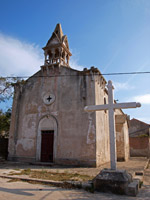
HISTORY: This church was built in 1660. by brothers Matij and Simun Paulina. The first initiative was made by Zadar archbishop Teodor Bablij. Next to the church, brothers Paulina have also built a monastery.
POSITION: It is 5 minutes away from the center and also 5 minutes away from the beaches Tratica and Carpusina.
TODAY: This church is permanently closed. Its condition is deteriorating day by day. The roof is severly damaged and is leeking. The church tower is very damaged and it's a matter of months before it falls down. It is really sad to watch a beautiful old building like this to go to ruine.
The Church of St.Ante
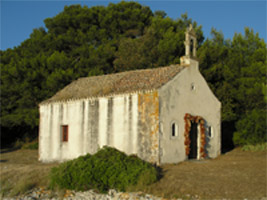
HISTORY: This small church was built in the middle of 18. century by family Bujacic. Later on, the bay it was built in got the new name - Porat Sv. Ante.
POSITION: As already written, it is situated in the Porat Sv. Ante bay. It is about 30 minutes on foot distant from the center.
TODAY: In the last few decades, this church is used only once a year in July, when celabrating the day of St. Ante and the big pilrimage is organized from the city center to the church. It is not in a good condition and therefore always locked.
The Church of St. Mary of Sadness

HISTORY: It was built in 1758. by Paskva Bracanin.
POSITION: It is in the center of Silba, right next to the market, and 50m away from the much bigger, parish Church of St. Mary.
TODAY: Like the most of the Silba churches, it is closed throughout the whole year, in bad condition and needs urgent repairments.
The Church of St. Mark
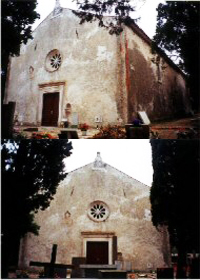
HISTORY: This church has been built in 1637. by Antun Vinturic, a ship merchant. Once he was sailing from Venice to Zadar with a boat full of valuable goods. Suddenly, he found himself in the middle of the storm. Luckily, he manged to find a safe bay on the island of Silba and then promised to build a church on Silba if he safely got to Zadar. In 1637., he fullfilled his promise to God.
POSITION: It is distant either 10 minutes on foot from the center or 5 minutes uphill from the bay Pocukmarak, which got its name after this church.
TODAY: The church is in the middle of Silba's cemetery so, from time to time, it is used for services. Inspite of that, it needs thorough renovation. It is closed for the most of the time, and can be seen only by the direct arrangement with the Silba's district-prefect.
The Church of St. Mary
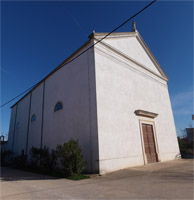
HISTORY: Its building started back in 1799. when people of Silba agreed that the Church of St.Mark had become too small for their needs. So they have decided to raise money and build a new one, right in the center of Silba. Due to Napoleon's occupation of Dalamtia, which also affected Silba, the church was completed in 1839. Then it became and still is the parish church of Silba.
POSITION: In the center of Silba.
TODAY: It is recently renovated from the inside and is opened during services. It also has beautiful old organs.
The Church of St. Mary interier
St. Mary interier - photos by Vedran Penga

